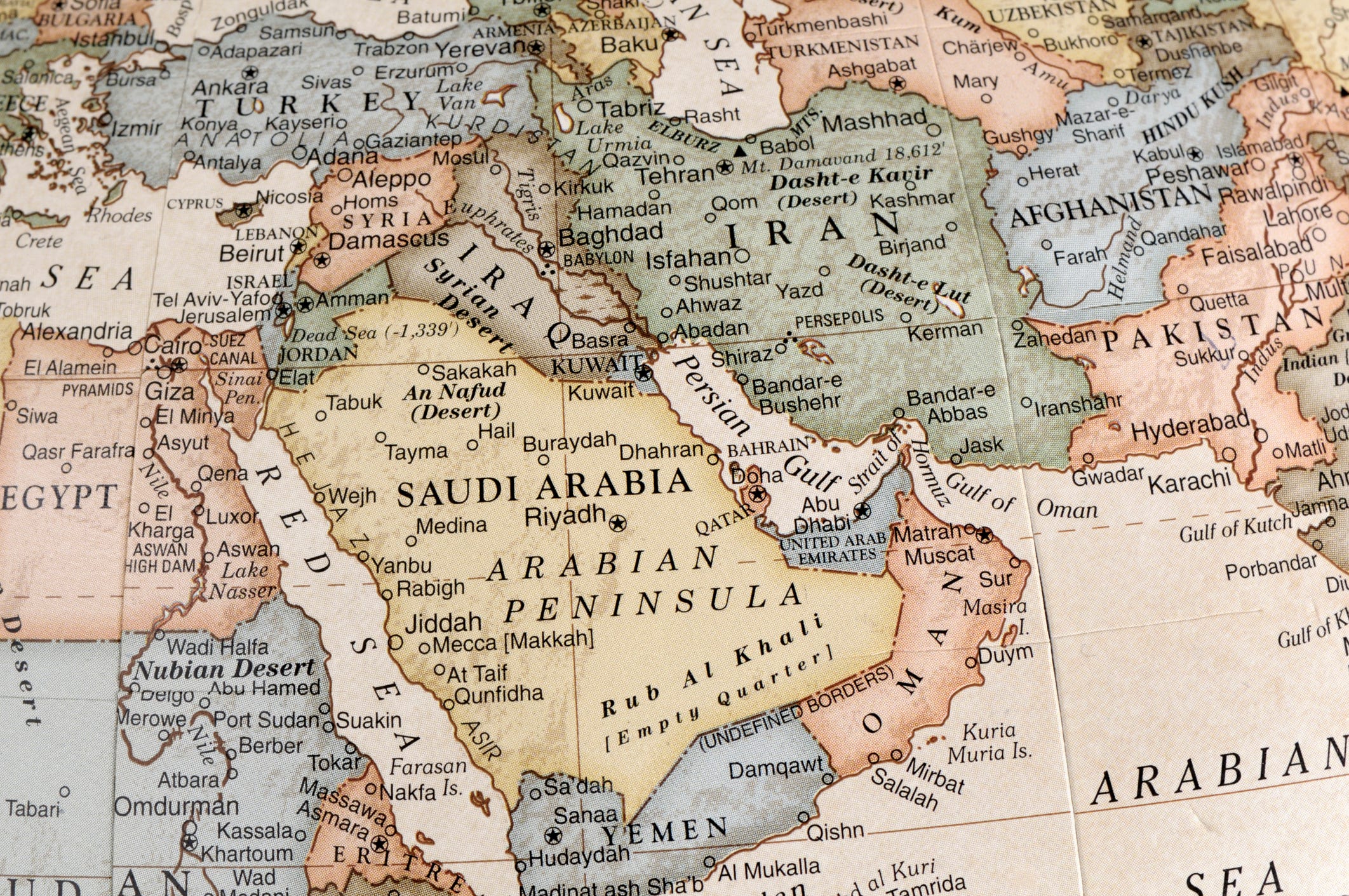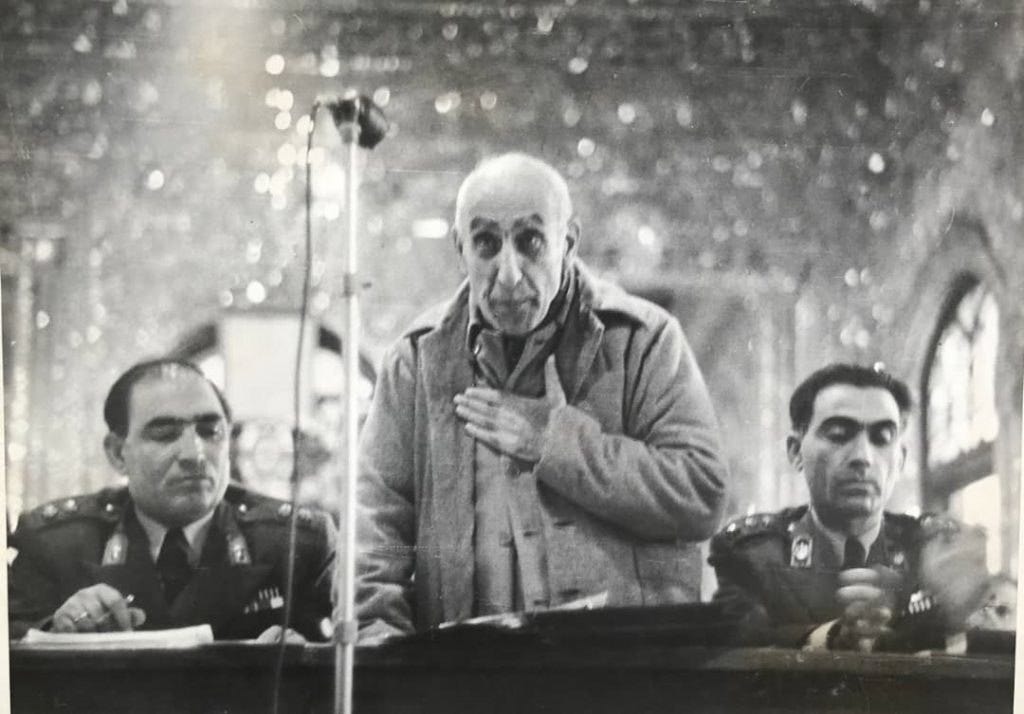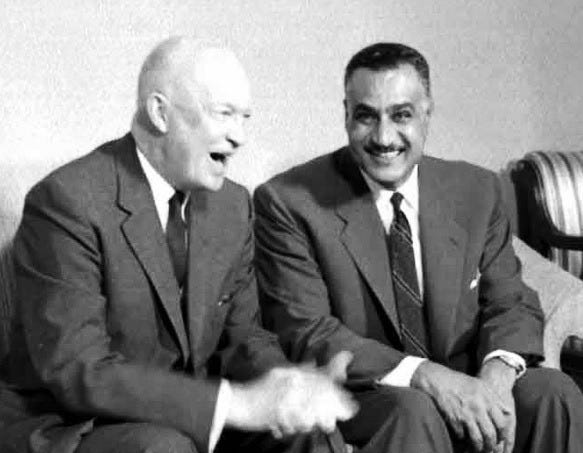|
 |
The Middle East is at war. Israel is rolling up Hamas in Gaza and clashing with Hezbollah in Lebanon. Last month, the U.S. bombed Houthi weapons sites in Yemen. After Iran attacked Israel with another big missile strike, Israel retaliated with bomber strikes against Iran’s military bases and ballistic missile production factories. More attacks between Iran and Israel appear imminent.
Needless to say—according to one popular narrative—the U.S. is to blame for all of this.
As the well-known expert Fawaz A. Gerges writes in “What Really Went Wrong: The West and the Failure of Democracy in the Middle East,” the region’s trajectory was decided in the 1950s by two fateful U.S. decisions. Motivated by its Cold War fixations, the U.S. failed to support secular modernizers Gamal Abdel Nasser of Egypt and Muhammad Mossadegh of Iran in their pursuit of national independence, self-determination and, in Gerges’ oft-repeated word, “dignity.” By abandoning our democratic principles and opposing leaders whom we unfairly suspected of communist sympathies, we nipped democracy and development in the bud and set the Middle East on its present course of authoritarianism and fanatical religious violence. Gerges believes the U.S. abandoned the Middle East to a “century-long Arab Spring” for the sake of Cold War-era stability.
This alternative history intends to refute Bernard Lewis’ cultural argument in his 2001 work, “What Went Wrong?” Lewis is the scholar Gerges and the other Middle East experts love to hate because he doesn’t absolve the Middle East of its own self-created problems or its inherent pathologies that have led to political violence. Gerges and others Middle East scholars believe Lewis’ analysis provided intellectual cover for Western neo-imperialism in the region.
To be fair, much of the criticism of dubious U.S. covert activities and misguided policies in the Middle East is justified. But Gerges’ book is marred by reductionism, wishful thinking and strange mythologizing of the main protagonists, Nasser and Mossadegh. Still, his arguments are worth examining if only because they represent the typical thinking of many left-leaning Middle East analysts—and not a few Washington policymakers—and probably will gain some traction.
To start, Gerges argues that the infamous 1953 CIA-sponsored coup against Prime Minister Mossadegh squashed the best hope for Iranian democracy. Engaged in “an all-out war against godless Communism” and fearing that Mossadegh had allied himself with the Iranian Communist Party, the Eisenhower administration ignored Mossadegh’s commitment to representative government and the rule of law. Mossadegh, according to Gerges, was an idealist who only wanted to nationalize Iranian oil to distribute the wealth “to the people.”
But the British, who ran the Anglo-Iranian Oil Company (today’s BP), wanted to maintain their generous concession and convinced Washington that Mossadegh was allied with the Moscow-backed Tudeh Party. The coup against Mossadegh restored the Shah Mohammad Reza Pahlavi to his throne and began 26 years of authoritarian rule as part of America’s “informal empire.” Gerges calls our coup “a death blow to America’s moral compass.”
Without the U.S.-sponsored coup, Mossadegh could have consolidated democracy. There would have been no brutal Iranian dictatorship, no Iranian revolution in 1979 and no Ayatollah-led theocracy with its associated regional chaos. That’s the argument in a nutshell, and it probably sounds familiar. It is hard to find many scholars defending the 1953 coup these days. And the image of Mossadegh as an idealistic democratic reformer has taken firm root. Gerges even compares him to Gandhi.
The reality is somewhat different. Mossadegh was a landed aristocrat from the former ruling family of Iran. As an opposition leader in Iran’s Majlis (parliament), he did strive to defend democratic practices and the rule of law. But his rise to power as prime minister was somewhat suspicious. He was not “democratically elected” by popular vote. He was nominated by the Majlis for the prime minister role after his predecessor was assassinated—an act Mossadegh might have known about beforehand. In accordance with the constitution of this constitutional monarchy (Iran was not a democracy in the early 1950s), the Shah accepted his appointment as prime minister.
Mossadegh was obsessed with nationalizing the Anglo-Iranian Oil Company, an issue popular with Iranians to secure Iran’s independence and “dignity.” Initially, the U.S. supported Mossadegh’s goals and didn’t care about the nationalization issue. He counted on receiving significant economic aid from the U.S. (So much for “dignity.”) Unfortunately, he refused to compromise with the British, who had all the oil production expertise. The U.S. tried to convince Mossadegh to accept a 50/50 profit-sharing arrangement, but it was all or nothing for Mossadegh. According to historian Kenneth Pollack in “The Persian Puzzle,” Mossadegh was quixotic almost to the point of being suicidal.
As Mossadegh’s political support withered, he became more authoritarian and extremist. He deprived the Shah of his constitutional powers, and he moved unilaterally to dissolve the Majlis when his party was about to lose the 1952 election. He rigged an unconstitutional referendum to justify the move. Desperate for support, the former anti-Communist even made an alliance with the Tudeh Party. In his pursuit of power, Mossadegh’s democratic convictions were the first victims. In Pollack’s words, he became the dictator of Iran.
Mossadegh’s stubbornness exasperated Washington. The British egged us on for a coup, and Eisenhower gave the green light to the CIA. The Shah dismissed Mossadegh, which was within his rights to do, but the stubborn prime minister refused to step down. Street demonstrations both for and against Mossadegh followed. The first effort to unseat Mossadegh failed—the CIA effort was a slapdash affair using misinformation techniques and rent-a-mobs—but then the royalist army stepped in and arrested Mossadegh.
In his insightful book “The Last Shah,” scholar Ray Takeyh argues it was the Iranians, not the CIA, who carried out the coup. Given the unstable nature of Iranian politics and the frequency of coup plotting, Mossadegh probably would have been deposed one way or another. He had many domestic enemies in the clerical establishment and the army. When he was removed from office and placed under house arrest, “the people” did not rise up in his defense. Iranians apparently accepted the outcome as a resolution of a power struggle between two rivals. Journalist Amir Taheri calls it a myth that this coup represented a decisive change in Iranian history.
Had Mossadegh remained in power, would he have become the father of Iranian democracy, as Gerges assumes? Probably not; his blatant undemocratic moves might have even led to a dictatorship of his own. And more than likely, the complete nationalization of the oil industry would have enabled him to consolidate power within his small circle. It is curious why Gerges thinks nationalizing oil in Iran wouldn’t have followed the familiar global pattern of consolidating authoritarianism and engendering corruption.
Even more curious is Gerges’ argument that the U.S. should have supported Nasser. In 1955, Egypt’s President Nasser sought international funding for his massive (dare we say pharaonic?) Aswan Dam project. Eisenhower initially supported a $70 million grant for the project, but when U.S. domestic opposition grew, Secretary of State John Foster Dulles, a Cold Warrior wary of Nasser, undermined the request for funding. Nasser then accepted help from the Soviets. Their relationship was already building; the Soviets were selling Nasser weapons that the U.S. was reluctant to give him.
To recover from being jilted on the Aswan Dam, Nasser nationalized the Suez Canal. The British and the French, in league with the Israelis, conspired to attack Egypt and retake the canal, but Eisenhower, furious with his erstwhile allies, intervened and even threatened sanctions. The British backed down, and Nasser claimed an improbable victory against imperialism, even though the Israelis crushed his army and occupied both the canal and the Sinai Peninsula. The U.S. negotiated the return of both the canal and the peninsula to Egypt, but the damage was already done. Our shortsightedness and distrust of Nasser, in Gerges’ telling, led him inevitably down a path to authoritarianism.
At this point, Gerges stretches the truth to the breaking point. An alliance with Nasser would have been impossible for the U.S., and not only because of his endless war on Israel. Nasser was an antidemocrat who, according to journalist David Pryce-Jones, established the Arab world’s first police state. In the succinct summary of historian Paul Johnson, Nasser was “a propagandist of genius, and a total failure as a military and political leader.” Gerges says he was “far from being a warmonger,” but he embarked on destructive wars with Israel—“our basic objective is the destruction of Israel,” he once stated outright—and costly interventions in Yemen. He had a constant need to cultivate foreign enemies and crises.
Under his regime, Nasser simply gave up one colonial overlord for another. His close ties with Moscow—by far the Soviets’ most important regional relationship—led to the USSR’s military expansion in the region. Today, the corrupt military government in Egypt is his lasting legacy. The idea of all this being different if we had supported the Aswan Dam is simply unbelievable.
Part of Gerges’ justification for rulers like Nasser is that they were democratic, in the sense that they were popular and their portraits adorn many homes and cafes. Remarkably, he doesn’t recognize that this itself is part of the problem. Many people do support these autocrats. But as current trends toward populism in the U.S. and worldwide demonstrate, the most popular leaders are not always the most democratic in the sense of respecting individual freedoms and the rule of law.
One also wonders if Gerges realizes how much his hero, Nasser, resembles his regional counterpart, the Shah of Iran. Both were antidemocratic, secular modernizers. We didn’t support Nasser, and supposedly this led to authoritarianism and an extremist counterreaction. In contrast, we did support the Shah, to the hilt, but we got a similar dismal result. Gerges doesn’t resolve this contradiction. Perhaps our influence in the region is not that decisive.
Further, Gerges badly overstates the Eisenhower administration’s approach to the Cold War. Although it did make a global effort to contain Soviet expansionism, it usually executed this effort in pragmatic terms and through diplomacy rather than “all-out war.” Meanwhile, the Soviets’ role in influencing the Cold War scarcely is mentioned in Gerges’ book. According to him, only the United States’ “imperial overreach and Cold War crusade” escalated the great power rivalries in the region.
“What Really Went Wrong” is a deeply flawed book, but its argument will likely resonate with many. It is much easier and more satisfying to blame the U.S. for the region’s authoritarian and extremist pathologies than to recognize that Middle Eastern leaders’ actions throughout the 20th century are primarily responsible for the current state of the region. Critics’ complaints notwithstanding, the U.S. should continue to back its key regional allies with a clear-eyed view that its ability to set the Middle East onto a better, more peaceful path is probably limited.
You’re currently a free subscriber to Discourse .



